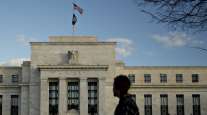Economists Lift GDP Projections as Factory Activity Picks Up
This story appears in the April 11 print edition of Transport Topics.
Fueled by stronger manufacturing and demand for freight, the U.S. economy will grow at least at a 3.2% annual pace in 2011, and truck tonnage will rise 5%, according to several recent reports.
Bob Costello, senior economist for American Trucking Associations, said in a March 31 report that he has raised his gross domestic product forecast to 3.2%, the fastest pace since 2004, from an earlier 3%.
Economist Noel Perry of consulting firm FTR Associates went further during an April 6 webinar, predicting GDP growth of 3.5% along with the 5% increase in tonnage.
“With manufacturing growing, consumer spending increasing, and exports solid, we anticipate trucking demand to grow at a decent clip this year,” Costello said.
“While oil price gains and supply-chain disruptions from Japan have added some concern, unless oil jumps to $150 per barrel, we believe the U.S. economy will continue down the path of recovery,” Costello said. “As long as external shocks are moderate, economic activity will continue to grow and even accelerate.”
“If oil stays in the current range of $100 to $110 per barrel, it will lower growth, but it will not cause another recession,” Costello’s report said. “A $10 increase in oil prices for one year shaves about 0.25% off GDP and would increase the consumer price index by about 0.5%. Certainly not ideal, but something the economy could withstand.”
Costello issued his forecast one day before the Labor Department reported that unemployment hit a two-year low at
8.8% and total non-farm payrolls rose by a greater-than-expected 216,000, including manufacturing job growth at a decade-high pace (see story, p. 4).
Another piece of recent economic good news was a 61.2 reading on the Institute of Supply Management’s measure of manufacturing activity for March, which nearly matched the 61.4 in February, which was the highest level since 2004. Any readings above 50 indicate expansion.
“We are on the up cycle,” said Perry, a former Schneider Nat-ional and CSX executive, though he cautioned that the current positive direction of the economy was “unlikely to get back to the previous peaks [in 2006] until hous-ing improves.”
On a positive note, he said “we can have a fairly strong cyclical upturn without housing,” which has lagged during the economic recovery.
However, he also underscored housing’s crucial role by saying that weakness in that sector reduced GDP by as much as 1.5 percentage points during parts of 2009, and that nearly 40% of the decline in truck tonnage during the recession was due to housing-market troubles.
He also said there weren’t expected to be any long-term economic effects in the United States from disasters in Japan, since businesses there began to recover in a matter of months after a massive 1995 earthquake.
Perry also said he expected that there will be more rapid swings between economic cycles.
“As much as we would like to have a nice gentle 3.5% GDP growth, the reality is that the economy is going to be more volatile.”
Other recent reports included Cass Information Systems’ freight index, which showed shipments rose 14% year-over-year in March, and an improved economic forecast from the Organization for Economic Cooperation and Development.
The Cass report, primarily based on trucking activity, was released on April 6 by the St. Louis-based company, which processes $17 billion of freight bills annually for all modes of transport.
Economist Rosalyn Wilson said in the report that “production at U.S. factories has continued to climb as businesses restock and reinvest in inventory, fueling the growth in transportation shipments. Business spending is still spurring the economy more than consumers.”
She also saw some positives, despite recent Japanese tragedies. Japan will need to import more food, providing an increased export opportunity.
The Paris-based OECD said on April 5 that economic growth for the United States, Canada, Britain, Germany, France and Italy would be 3% in the first half of 2011, up from its prior forecast of 2% for those countries as well as Japan, The Associated Press reported.




